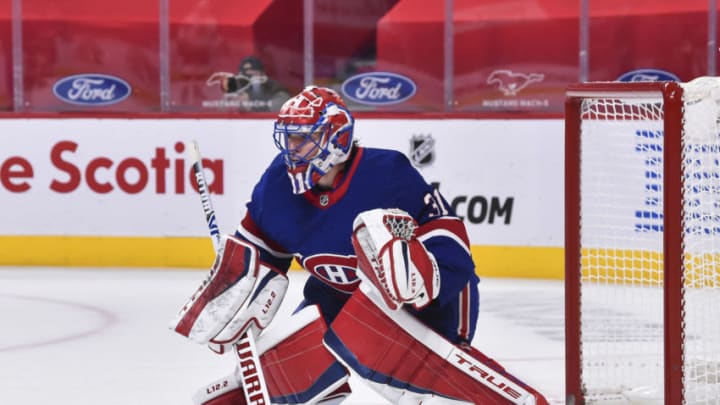
4. The Chiarot-Weber pairing
From one duo to another. The Chiarot-Weber pairing formed two-thirds of “The Trident”, the moniker Kevin Bieksa gave the duo along with Jeff Petry during the bubble. And the time has come to dissolve the pairing. They struggled for most of the 2019-20 regular season, played formidably for 10 postseason games and have struggle yet again in this 2021 season. They are too similar and too slow to be an effective pairing in the modern NHL.
While advanced stats would indicate that the pairing has actually been Montreal’s best this season but has been the victim of bad luck, the eye-test tells a different story entirely. Both of these evaluatory mediums are valid and have their place, but neither should be taken as absolute truth. In this case, despite the strong underlying numbers, I think the Habs would be best off with dissolving this pairing.
This is in part due to Chiarot’s poor play to start the season. When he’s on his game, as he was in the bubble and for most of 2019-20, he is a big, strong defenceman with decent mobility who can eat big minutes. Right now, however, he is continuously taking unnecessary minor penalties and leads the league with 39 minutes spent in the box, that’s more than 2 minutes per game.
Not only has Chiarot left his team shorthanded rather often, but he also hasn’t been his previously reliable self when he’s been on the ice. His first pass has been poor and has hemmed the Canadiens in their own zone quite regularly. Something needs to be shaken up.
While many are calling for a Romanov-Weber pairing, I don’t think Romanov is ready for such big minutes. For the time being, there simply doesn’t seem to be an ideal solution. Therefore, I propose structuring the defensive pairing like the top-9 on offence: evenly. While Edmundson and Petry have been very good together, which would make the Canadiens hesitant to split them up, Kulak and Petry formed a great partnership for an extended period of time. I would propose:
Kulak-Petry
Mete-Weber
Chiarot-Edmundson
Mete and Weber are foils, they make up for each-others deficiencies. Mete is quick and nimble, Weber is not. Weber has a booming shot and physical presence, Mete does not. The third pairing would be a shutdown pairing that could extinguish any offence from the opposition’s bottom-6. They would have similar deficiencies to the current Chiarot-Weber pairing, but they would not be facing the McDavids and Matthews of this world shift after shift.
That leaves Romanov. I think the young Russian would really benefit from a month in Laval. With Kaiden Guhle and Gianni Fairbrother heading back to the WHL, the left defence in Laval would be his for conquering and he could freely play his high-risk game. I think that a confidence boost is just what he needs. After a month, he could come back to Montreal and be inserted straight into the lineup, but a little reset may be beneficial.
